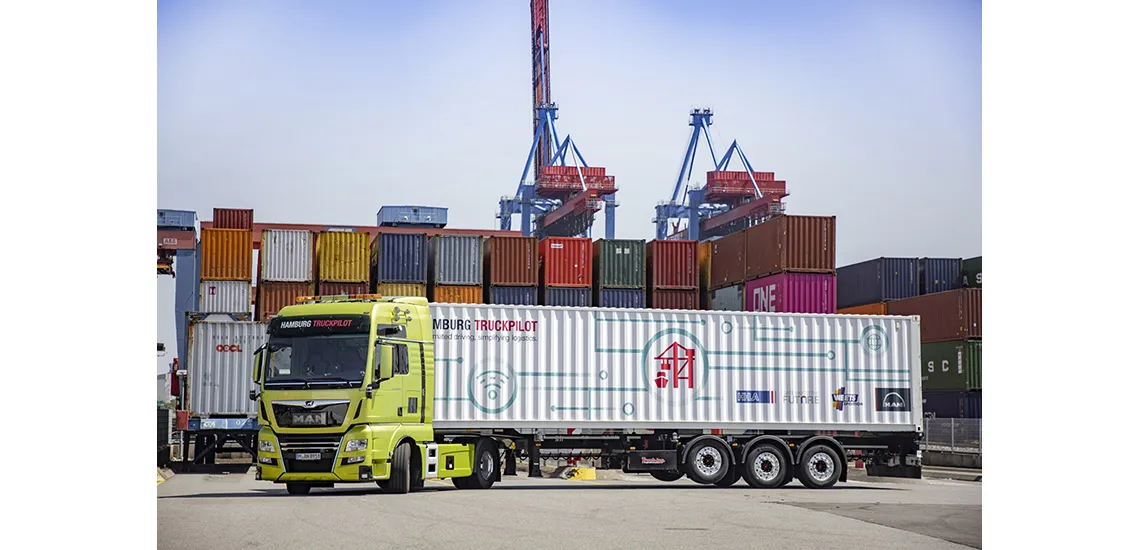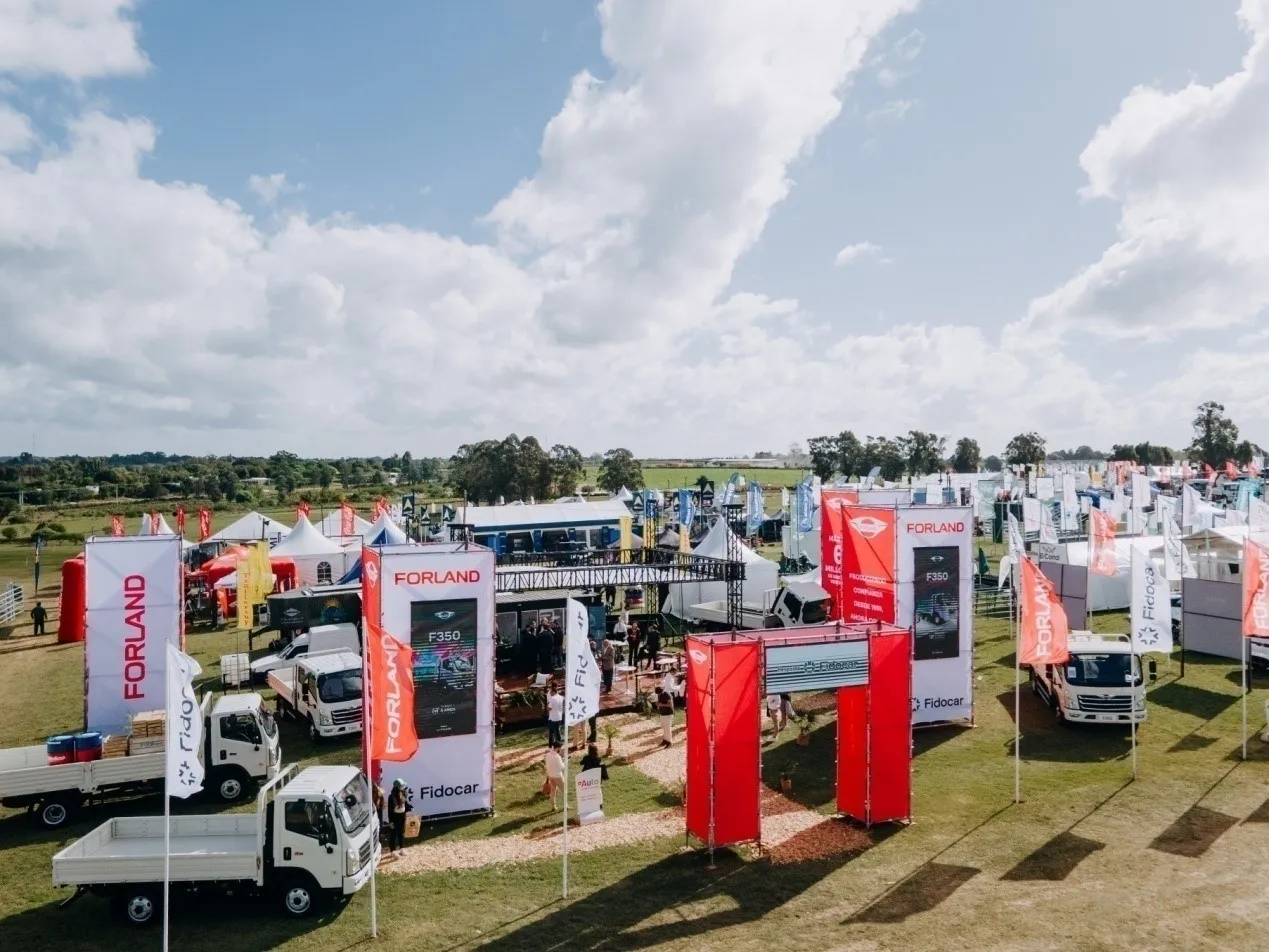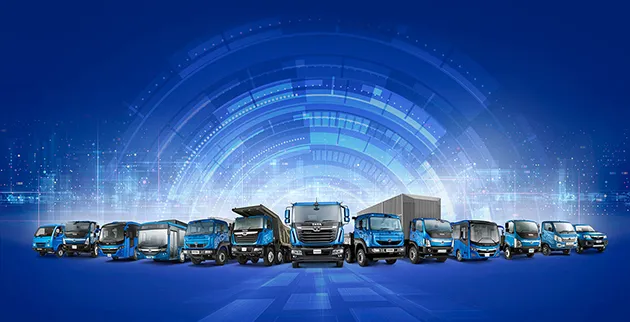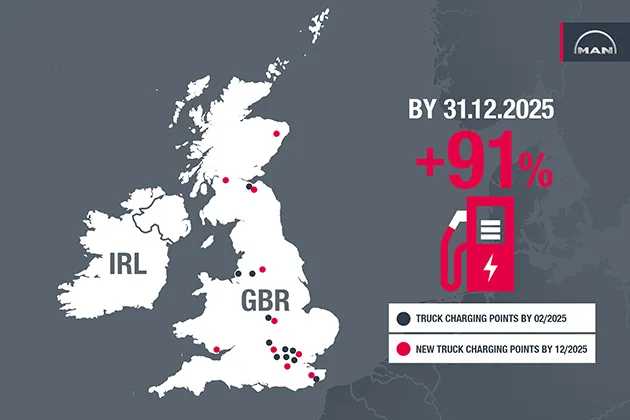MAN Truck & Bus and Hamburger Hafen und Logistik AG (HHLA) are jointly testing autonomously driving prototype trucks in real-world applications.
“Hamburg TruckPilot” Celebrates Success
The practical test drives at the HHLA Container Terminal Altenwerder (CTA) showed that automation is no longer a dream of the future, but can be integrated efficiently and safely into customers’ actual logistics workflows. And all the more so since German lawmakers recently created the basic framework for autonomous trucks to be used in logistics applications in defined operating areas in Germany.
Since the end of 2018, MAN Truck & Bus and Hamburger Hafen und Logistik AG (HHLA) have been driving forward the “Hamburg TruckPilot” research and testing project to develop automation solutions. Following the preparation and test phase, the highlight was the practical test drives from the end of May, during which prototype trucks equipped with electronic automation systems ran in regular logistics operations.
The involvement of the forwarding company Jakob Weets e.K. from Emden was important for the successful process: The logistics partner not only provided drivers, but also took care of the complete container handling and integrated the prototype trucks into their regular transport process. “We are pleased to be part of the innovative research project and thus to support the development of future automation solutions,” says Managing Director Jakob Weets, referring to the potential that automated driving functions may offer in terms of relieving truck drivers in the future.
During the respective practical trip, the Weets driver first transported a 40-foot container on behalf of VW Group Logistics from the Weets Container Terminal in Soltau to the Container Terminal Altenwerder (CTA) in the Port of Hamburg, about 70 kilometers away, in a completely conventional steering manner.
After the CTA check gate, the driver switched to the passenger seat and a safety driver climbed in instead, who had to be on board for legal reasons and could also intervene in the unlikely event that the test under prototype conditions required this. This guaranteed absolute safety for all involved at all times during ongoing terminal operations.
The truck then drove autonomously across the terminal site to its correct position in the block storage lane and also maneuvered autonomously backwards into the correct parking position. After container handling, the return trip to the check gate was also autonomous, and beyond the terminal site, the driver of Spedition Jakob Weets e.K. again took full command.
Till Schlumberger, project manager at HHLA and responsible for Hamburg TruckPilot, is very satisfied: “The tests have shown it. We can integrate autonomous trucks into our terminal processes. An important step, because autonomous driving is coming. Accordingly, we at HHLA want and need to prepare ourselves early on for the prospect of autonomous trucks picking up or delivering containers at our terminals.”
Sebastian Völl, Project Manager for Automated Driving at MAN Truck & Bus, is also pleased with the successful practical test. “Hamburg TruckPilot is an important technological milestone on the road to hub-to-hub automation,” says Völl, categorizing the success and thus addressing another aspect that takes place during the practical test drives in Hamburg. Because on the feeder runs on the A7 between the Weets Container Terminal Soltau and the port area, the project participants already collected a lot of data during the practical test runs for upcoming projects that could also take place outside closed areas in the future. This is because it was only at the end of May that the Bundestag and Bundesrat passed the law on autonomous driving, which in principle allows the use of such autonomous vehicle systems in Germany in defined operating areas, such as on routes between logistics hubs, monitored by technical supervision.
The project partners will present the detailed results of “Hamburg TruckPilot” at the ITS World Congress in October 2021.








